Pepperdine Plans for the Unpredictable October 2020
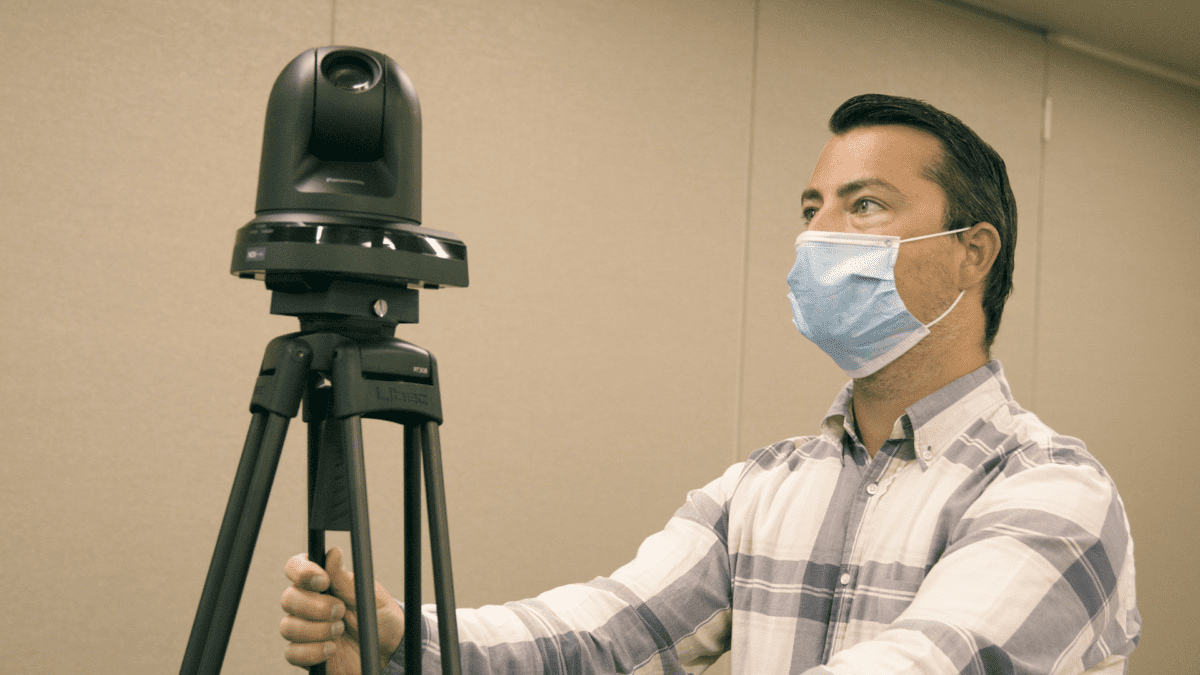
Case Study
Pepperdine University
Planning for the Unpredictable with EduFLEX™
COVID-19 sent a shockwave through the American higher educational system, just as it did every other aspect of our economy and society. But for Pepperdine University – a private Southern California institution that had long since embraced advanced learning technologies – the pandemic didn’t alter the university’s technology planning as much as it accelerated the timetable for doing so.

Situation
Higher Ed was already at a crossroads
Rapid technological change. Rising tuition and increasing operational costs. Accelerating competition for learners and a decline in international student enrollment. These and a host of additional challenges had stressed the traditional economic model for colleges and universities well before COVID-19 arrived on campus.
Like many forward-thinking universities, Pepperdine knew that it needed a smart technology strategy to respond to changes that were already underway. Before anyone had heard of COVID-19, for example, it was busy planning an expansion of its online educational activities.
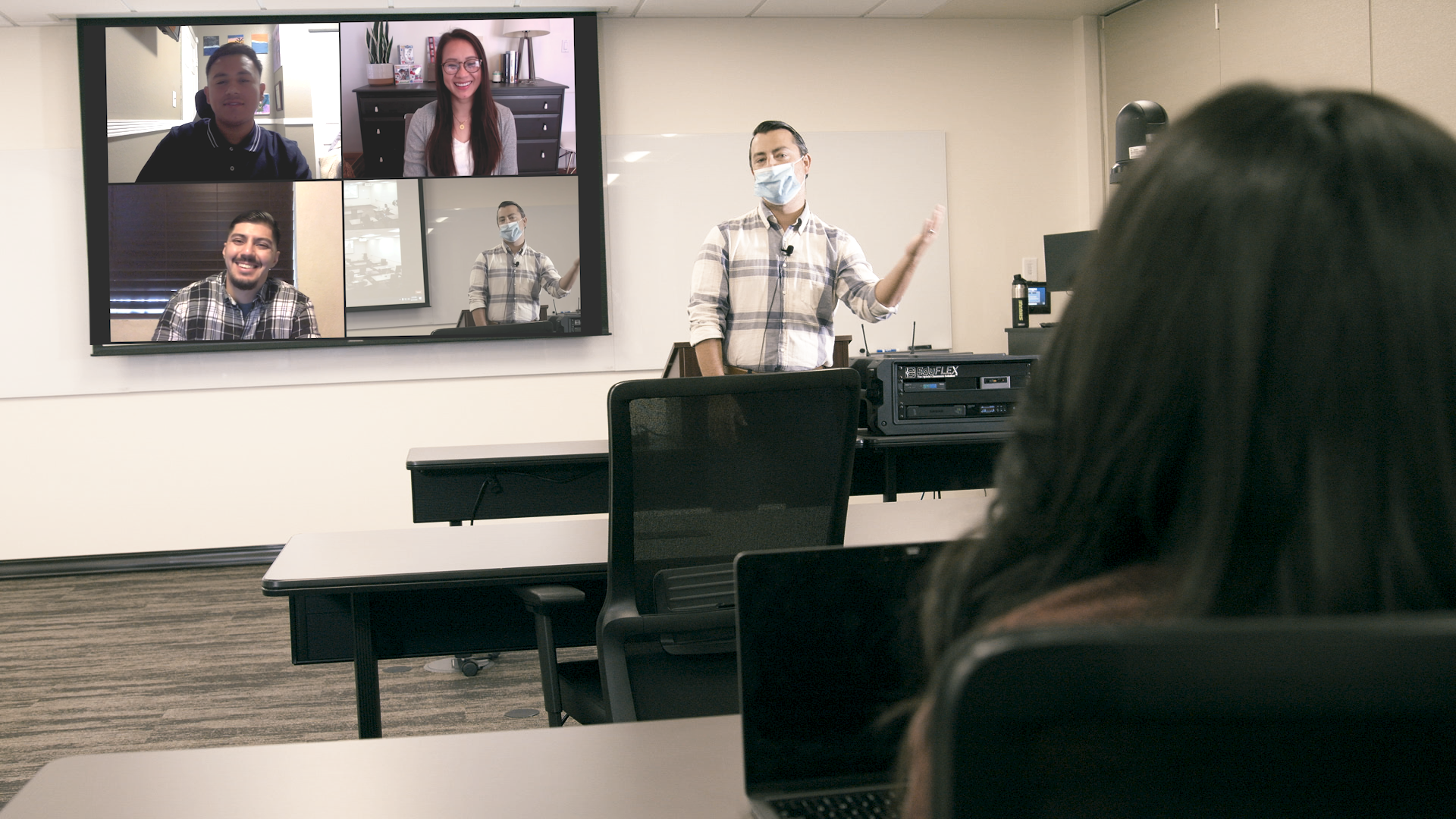
“[The technology] provides a new way of learning that students are really looking for, especially nowadays,” says Sean Kalaras, team lead for audiovisual technologies at Pepperdine. As an example, he cites working adults seeking to earn graduate degrees. “They want the flexibility to maybe come to class one day, but take a lecture online the next. So I think absolutely these systems will be utilized moving forward, and will give Pepperdine the ability to provide new ways of getting content to students.”
Highlighting the importance of acting on its technology strategy, the pandemic also hammered home the need to implement changes in a way that maximized flexibility. Because if there was one overriding lesson to be drawn from COVID-19, it’s that none of us knows what lies ahead. Transformational change doesn’t always present itself in the horizon; more often than not, it waits just around the next bend.
Challenge
A hybrid learning capability in time for fall
Pepperdine University knew that it needed to act fast. Once in-classroom learning ceased in March, 2020, faculty and staff responded as best they could to maintain educational continuity. But the relief they felt after the spring term concluded immediately gave way to trepidation over how best to prepare for fall.
The unpredictable course of the pandemic complicated preparations. Would COVID-19 burn itself out with the warmer weather? Would it prove to be more or less contagious than imagined? Initially compared to the annual flu, the virus was revealing itself, with each passing day, to be something markedly different – and more dangerous.
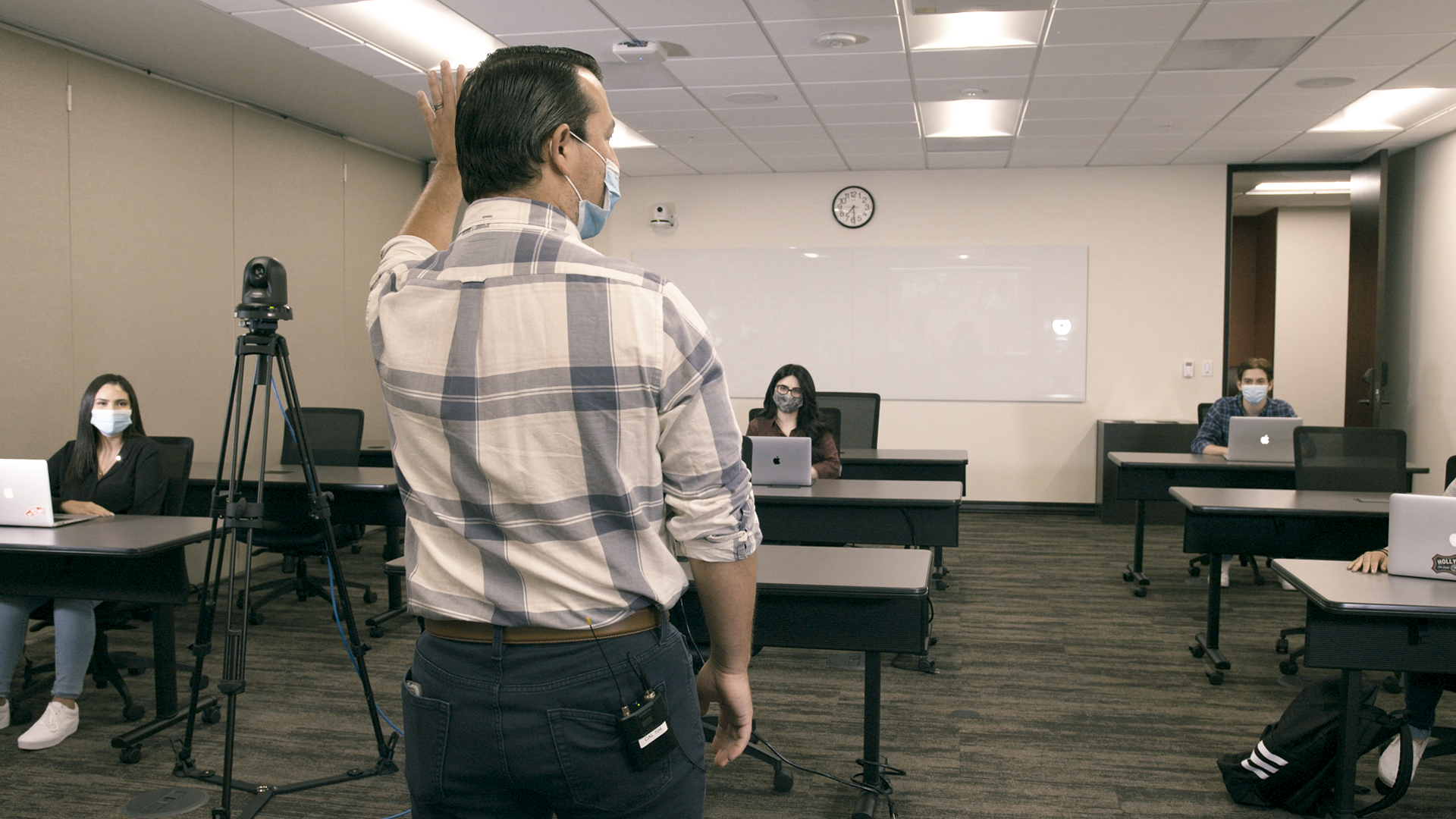
Similar to other universities, Pepperdine ardently hoped to welcome students back for the fall term. But continued uncertainty meant that the university had to be ready for anything.
“They needed the ability to adopt hybrid learning technology across campus, and in a form that would enable them to respond quickly to the needs of the moment,” says Christina De Bono, founder of ClearTech, a preferred technology partner of the university.
The need went beyond simply equipping every classroom for online instruction. Pepperdine required a solution that could be deployed quickly and nimbly without sacrificing the flexibility to redeploy the technology as needed.
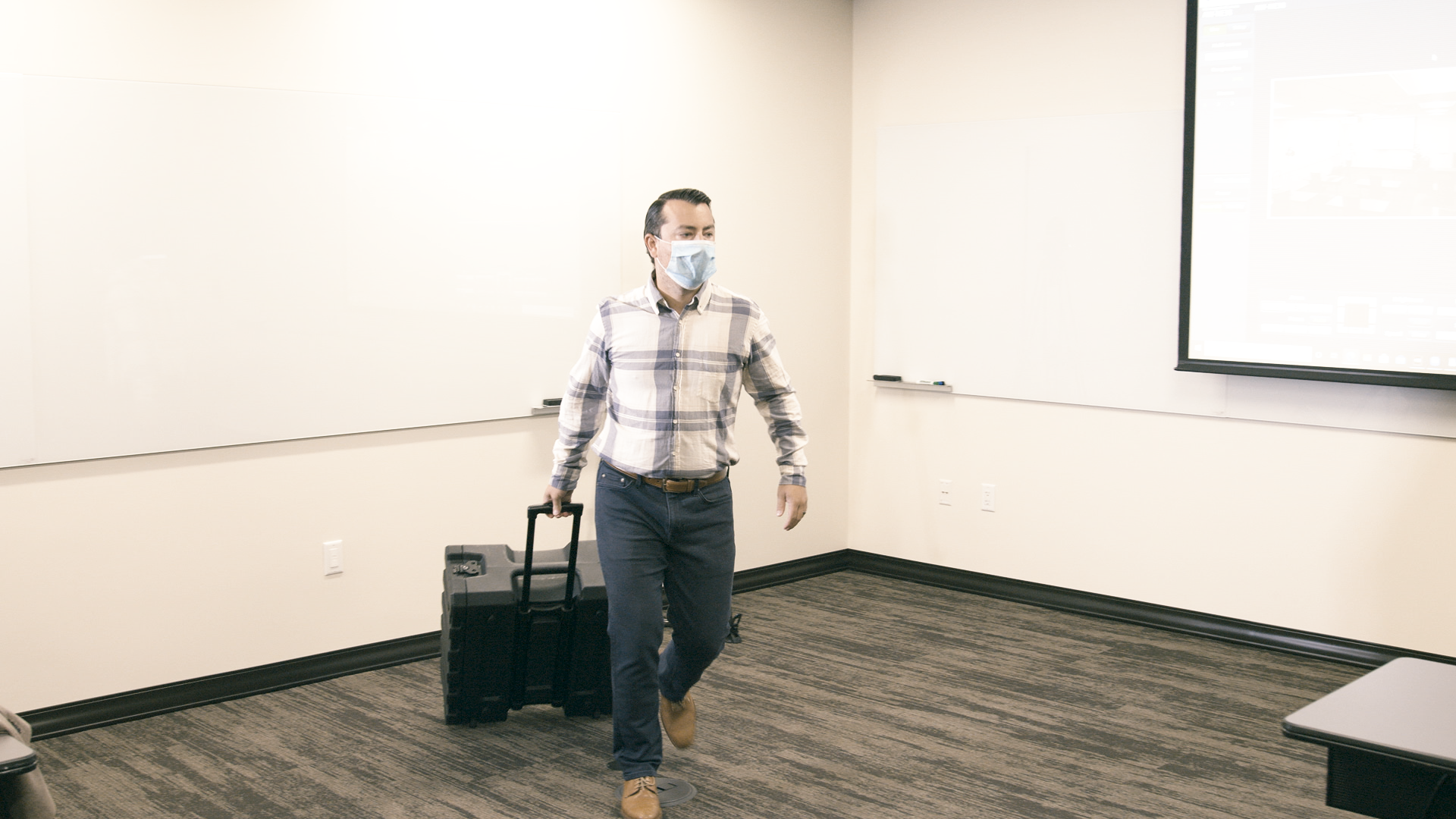
That wasn’t the only challenge. “We didn’t want our faculty to feel like they had to re-learn the technology…We needed a solution that would be turnkey and completely location agnostic, so no matter where you’re teaching, you could walk into the room and it was going to feel the same as every other space,” says Jared Mukai, Ph.D., manager of AV technologies and special projects at Pepperdine.
“There were a lot of complexities we needed to work through on a very tight timeline to ensure we’d be ready to support our students and teachers with online class instruction by mid-August,” continues Mukai. “We evaluated various scenarios but with the uncertainty of the new academic year, we knew we needed a solution that could support all types of learning environments.”
Solution
The benefit of flexibility
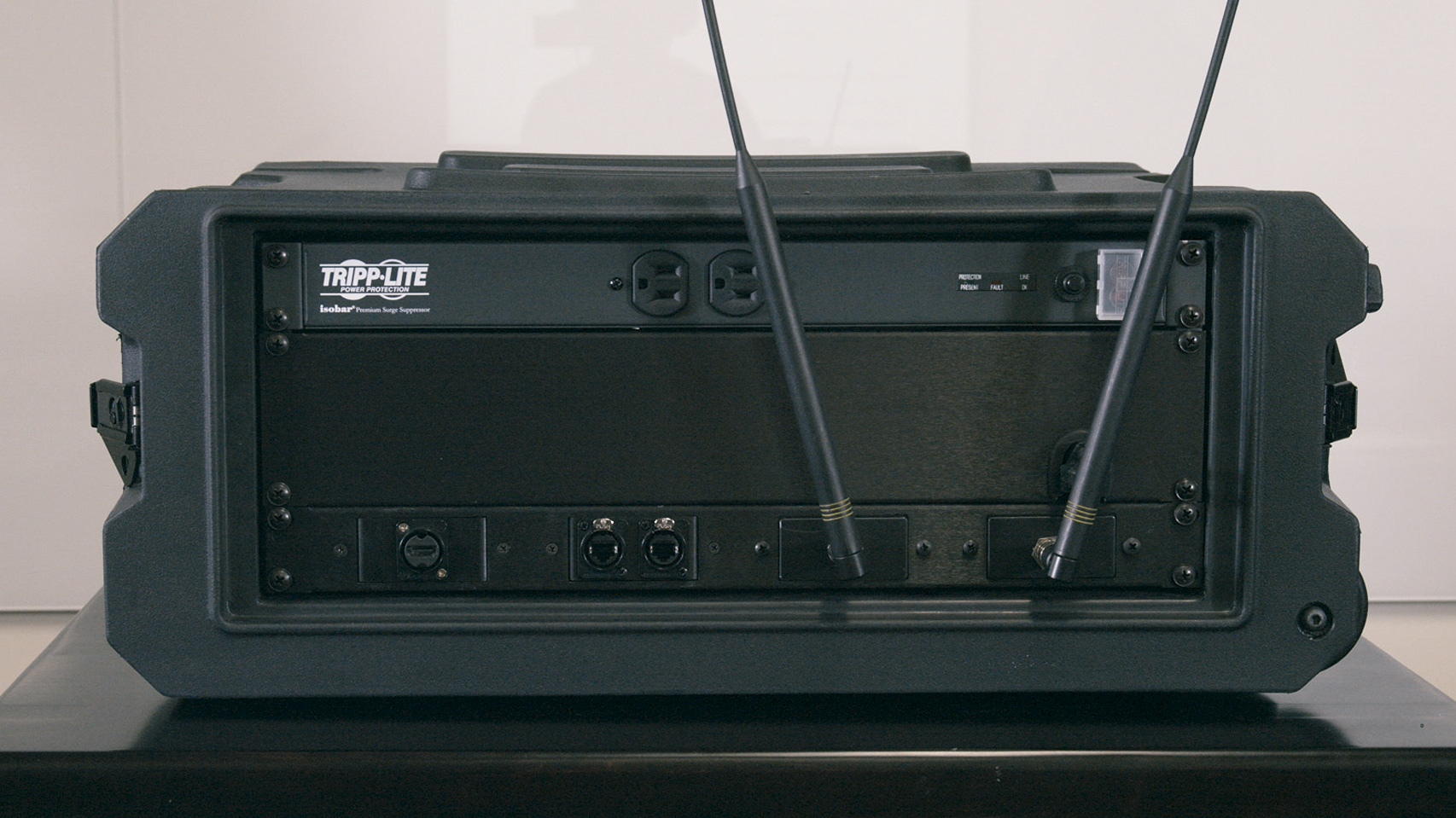
“ClearTech’s EduFLEX solution with Panasonic’s PTZ cameras was the clear choice given its reliability, flexibility and versatility to transform distance learning environments into engaging teaching experiences,” explains Mukai.
“Pepperdine required a remote learning solution they could count on not to fail as the deployment was mission critical to the university,” adds De Bono. “EduFLEX delivers an in-person, campus-like experience remotely with simplicity and ease of operation.”
EduFLEX is an affordable, self-contained system that even non-experts can have up and running within five minutes.
“Choose from a portable version that incorporates all components in a rolling case, or a desktop/rack-mountable system with all components built in,” says De Bono. “Simply plug in an HDMI cable, set up your camera and you’re ready to teach.”
Designed for maximum flexibility, EDUFLEX works with schools’ existing technology infrastructures and communication platforms. Moreover, the solution offers all the benefits of unified communications (UC) while freeing colleges and universities from the rigidity of costly and complex hardware-based systems.
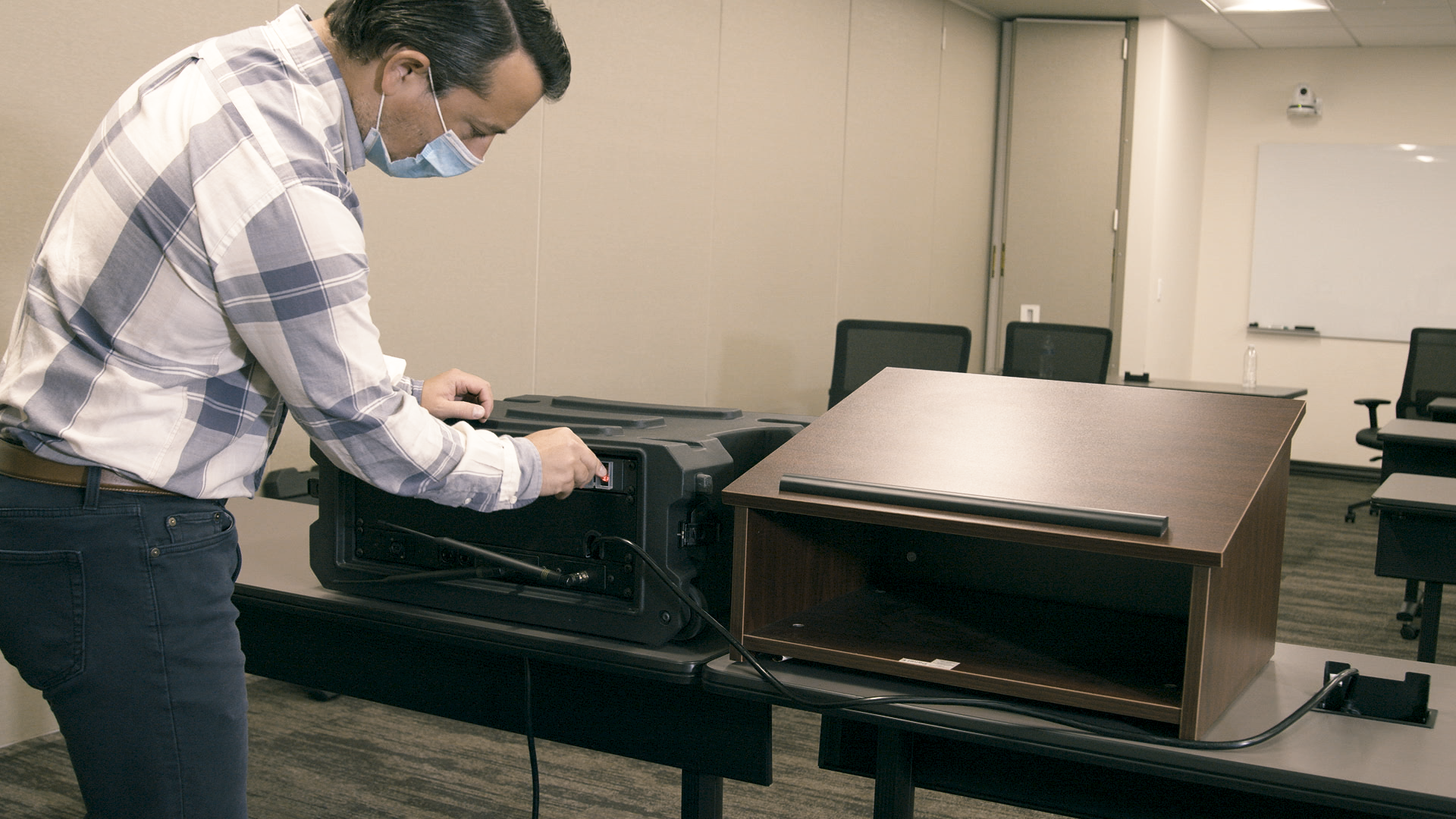
“In developing EduFLEX, we listened very carefully to our customers to get a clear sense of their needs,” says Joe Perez, CTO of ClearTech. “Students want the best possible experience, consistent with how they consume technology elsewhere. Faculty need distance learning solutions they can count on and control, and that won’t detract from their mission to educate. Similarly, administrative and support staff require workable, scalable solutions for classroom conversion and everyday technology maintenance.”
Adds Sean Kalaras, “I think the biggest benefit is flexibility. Pedagogy differs so much between faculty members, and we wanted to put a system in place that could work for a multitude of teaching styles. EduFLEX doesn’t lock you into any one [style]. It lets you teach how you’d normally teach, and lets you be creative in coming up with ways to keep your students engaged.”
Result
“We’ve been getting great feedback on it.”
Pepperdine University deployed EduFLEX in 166 classrooms and 24 non-academic spaces across its five Southern California campuses in just three months. “The beauty of the EduFLEX solution is that it’s as easy to deploy as it is to use,” says Joe Perez. “Along with the monitor, all that’s required is a power outlet and an ethernet port. You don’t need to lay cable, open walls, bring in power supplies, or touch your existing technology infrastructure in any way.”
“Deployment is fast when time is short, and the system is economical because money’s tight,” adds Perez, “but that’s just part of the equation. Think in terms of scalability. EduFLEX’s simplicity, reliability and economy make it ideal for rapid deployment – and redeployment – wherever you have the need.”
The reaction thus far from Pepperdine faculty and support staff? “We’ve been getting great feedback on it,” says Kalaras. “I think the biggest thing is how easy it is to use. We wanted to put something into place would be almost a turnkey solution for faculty members, and I think we really did achieve that. They just walk into the classroom, turn on the system and sign on to their Zoom call. The technology behind the scenes just works the way it’s supposed to, and they don’t have any issues.”
To learn more about EduFLEX, visit ClearTechAV.com/eduFLEX. For more information about Pepperdine University’s offerings, please visit https://gsep.pepperdine.edu/.
In the upcoming second installment of our Pepperdine Case Study, we’ll review EduFLEX performance on multiple fronts, including ease of deployment and simplicity of support and maintenance.

